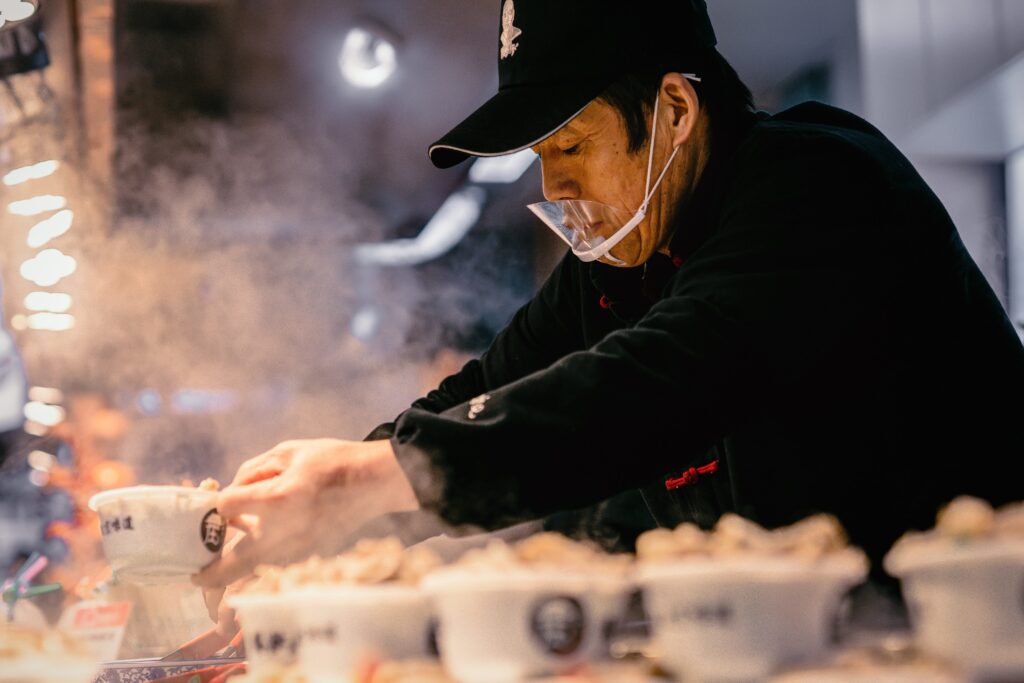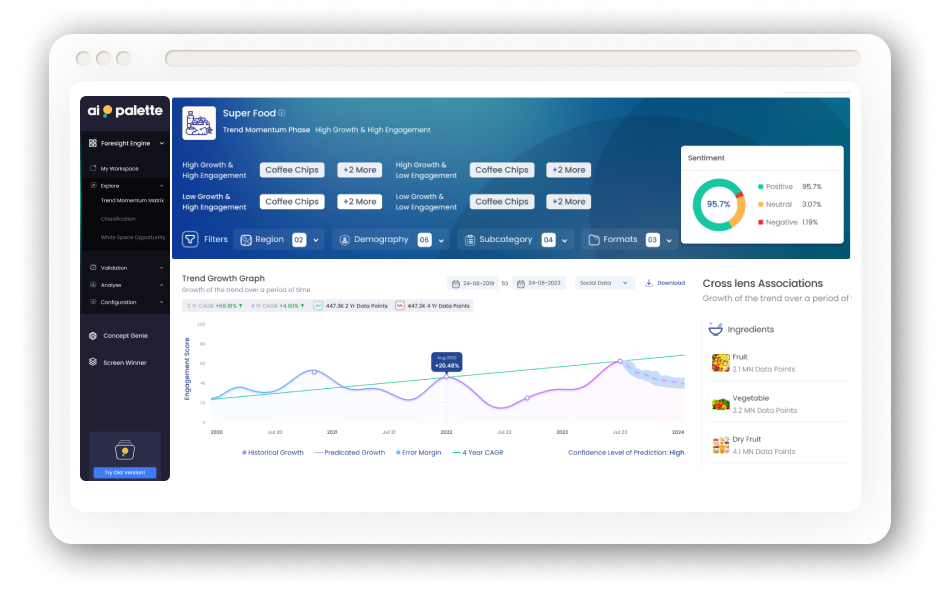(This article was authored by Jerome Linder, Head of Customer Engagement, Ai Palette)

If I were to ask, “what does it take for a food and beverage (F&B) brand to triumph in a competitive market?” You may think that the answer is obvious and the question silly. The brand must launch best-selling products that are widely accepted by consumers, increasing its profitability and goodwill, thus making it successful in the industry.
But is it that simple?
Market research company IRI’s recent report showed that in the United States, Covid-19 drove changes in consumer behaviour in 2021 as more became conscious about their immunity, health and wellbeing. Most of the products we label ‘junk food’ decreased sales, and eating out at restaurants reached a standstill. However, this strong momentum may fade in 2022 as category crowding, supply chain issues, and inflation takes their toll. Still, sales of new product launches in 2021 remain strong and at pre-pandemic levels.
Consumer preferences ebb and flow, and product innovation isn’t straightforward. A brand cannot often launch an evergreen bestseller to challenge Coca-Cola or Kellogg’s Special K. Even these sometimes struggle to expand their portfolio and lure consumers to their other offerings. This is why brands need to understand their consumers’ preferences thoroughly. Cue the need for consumer insights.
Deep consumer insight drives success
Success is driven by the ability of F&B brands to deliver products that consumers want at the right time. This includes products that convey something special that the consumers need now – excitement through novel flavour combinations, control over their sugar intake or plant-based goodness.
Innovation success is a long journey and not without risks of getting it wrong. Getting it right often seems more akin to luck than good strategy.. Therefore, to succeed, F&B brands invest heavily in knowing their consumers, what they need, how they change/evolve and anticipate their next move. This is where consumer insights play an important role They help monitor what customers buy and love and help brands craft the right products at the right time.
Traditionally, an F&B brand will reach out to its consumers through market research surveys. These surveys paint a detailed picture of consumer needs for the brand, which can use this information to create exciting products for them. Market Research has been the go-to solution for understanding consumer needs over the past few decades and has helped yield some fantastic results for companies large and small. Nevertheless, all in the industry agree that it needs to adjust to the new parameters of our fast-changing world.
Traditional research challenges holding you back
One of the challenges of traditional market research surveys is the time it takes to complete, usually months or even years. This means the brand misses out on opportunities and loses sales and profitability.
The second challenge is that the insights derived could be outdated because of the time taken by this method. Suppose a consumer tells the surveyor in May that they prefer ice cream, but the survey’s results are published in December, it makes little sense to assume that ice cream is still a trend among consumers, whose needs are changing faster than ever, exacerbated by the ubiquity of social media, and currently in flux post-Covid.
Thirdly, Food and beverage brands must constantly determine if their products are still relevant to consumers. For example, when COVID-19 forced consumers into their homes, there was little need for easy breakfast options to help them quickly finish a meal and commute to the office or school. So how could a breakfast cereal brand, for example, which has relied on this consumer need, stay relevant when that need no longer applies?
Without timely consumer insights, a brand can’t understand the changing preferences of consumers on a regular basis and more so during disruptive global events In the case of COVID-19, for example, traditional market research was made redundant because it was impossible to conduct door-to-door public surveys,
F&B brands are looking for ways to be more agile, nimble, and better at making sense of what is happening.
AI in F&B Industry
This is where predictive analytics using Artificial Intelligence (AI) can help. AI is widely used in the F&B industry to derive consumer insights in real time and launch best-selling products quickly. This is possible because of the way AI collects data and operates.
The ubiquity of social media and online platforms such as e-commerce, Google searches and food service menus mean we have billions of data out there that could tell us a lot about consumer needs and how they evolve, almost in real-time. But the sheer size, velocity and quality mean that only an intelligent machine can sieve the necessary and invaluable insights.
sing AI-based predictive analytics, F&B brands can reduce their product innovation and product launch time by up to 90%, i.e., from two years to a few months. Diageo, for instance, launched two new flavours under its Smirnoff vodka brand in the Thailand market using AI. You can read all about Diageo’s product launch here. Let’s see how AI makes this possible
AI-driven Food & Beverage insights can help CPG and Ingredient companies make the right decisions in many ways:
- Provide Rich Insights in Real-time: This reduces the need to wait for consumer research surveys to finish before arriving at insights.
- Identify White Space Opportunities: Mars in China used data from Alibaba to identify how Snickers buyers in China also loved spicy food. It then launched the successful Spicy Snickers in that market.
- Precision: The availability of Big Data means we can track trends of the past, analyse its present engagement levels and predict future growth
- Improve Innovation or Marketing plans: This helps brands better anticipate consumer preferences.
- Reduce speed-to-market: Brands can waste less valuable time during the Discovery and Consumer Research phases and get the best ideas to market quicker.
This is just the tip of the iceberg of what AI can help achieve in the food and beverage industry, and the technology is still in its infancy.
Read our blog as a continuation to learn more about how AI can help with product innovation and marketing.
If you want to know more about how AI can help your F&B brand, schedule a demo with us, and we’ll show you how.



















